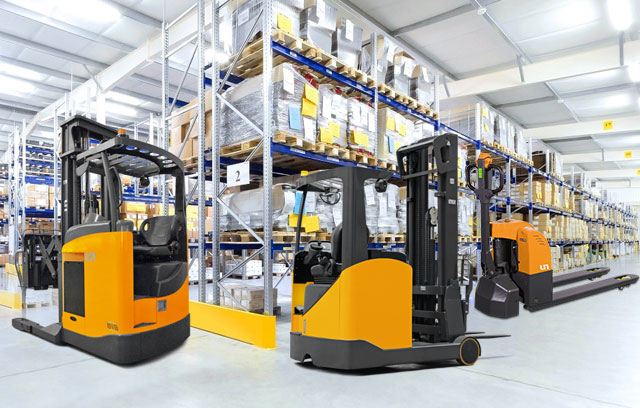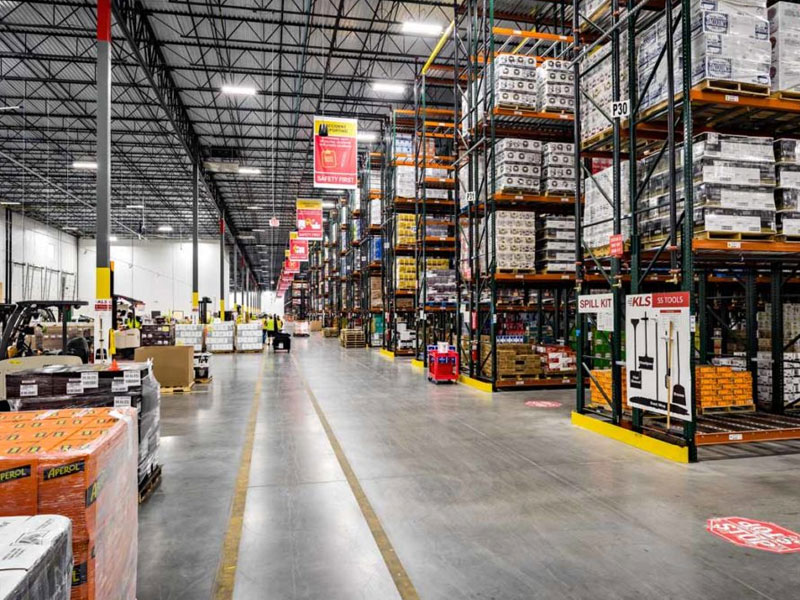Understanding Gas Forklifts
Gas forklifts are powered by compressed natural gas (CNG) or liquefied petroleum gas (LPG) and are widely used in warehouses, industrial sites, and distribution centers. They provide a balance between power, operational efficiency, and emissions control. The performance of gas forklifts can vary depending on the load they carry. Operating a gas forklift fully loaded versus empty affects handling, fuel efficiency, braking, and overall stability. Understanding these differences is essential for safe and effective operation.
Impact of Load on Stability
When a gas forklift is fully loaded, its center of gravity shifts upward and forward due to the weight of the load. This change impacts the stability triangle, which is the area formed between the front and rear wheels and the center of gravity. A fully loaded forklift is more prone to tipping, especially during turns or sudden stops. Conversely, an empty forklift has a lower and more centered center of gravity, making it more stable but potentially more susceptible to rear-wheel lift if the forks are raised too high. Operators need to adjust their driving techniques according to the load conditions to maintain safety.
Acceleration and Performance Differences
The engine performance of a gas forklift is influenced by the load being carried. When fully loaded, the forklift requires more engine power to accelerate and maintain speed. This increased demand can result in slower acceleration and higher fuel consumption compared to an empty forklift. Empty forklifts respond more quickly to throttle input and consume less fuel due to lower resistance. Fuel management and engine tuning must consider these differences to optimize operational efficiency in both scenarios.
Braking and Stopping Distance
Braking behavior is significantly affected by load. A fully loaded gas forklift has a longer stopping distance because the brakes must overcome not only the vehicle's mass but also the additional weight of the cargo. Operators must anticipate stopping distances and allow more space when fully loaded. Empty forklifts can stop more quickly, but sudden braking may cause the rear wheels to lift slightly if the forks are elevated, potentially creating a hazard. Proper brake maintenance and operator training are critical to manage these differences safely.
Turning Radius and Maneuverability
Load weight affects the turning radius and maneuverability of gas forklifts. Fully loaded forklifts have a larger turning radius due to reduced traction on the rear wheels and increased inertia, making tight turns more challenging. Empty forklifts have greater maneuverability and can navigate tighter spaces more easily. Understanding these differences is crucial in environments like warehouses where space is limited, and precise movement is required. Operators must adjust speed and turning angles based on load conditions to prevent accidents and ensure efficient operation.
Tire Wear and Ground Pressure
The distribution of weight influences tire wear and ground pressure. Fully loaded gas forklifts exert higher pressure on the tires, particularly the front tires supporting the mast and forks. This can accelerate tire wear and increase the risk of floor damage in indoor environments. Empty forklifts distribute weight more evenly, resulting in reduced tire wear and less floor stress. Proper tire maintenance schedules should consider the load patterns to extend the life of tires and protect surfaces in industrial and commercial spaces.
Hydraulic System Behavior
The hydraulic system, which controls the lifting and tilting of the forks, behaves differently depending on the load. A fully loaded forklift requires more hydraulic force to lift and tilt the load safely, which can increase wear on the hydraulic components. Empty forklifts operate with less strain on the hydraulic system, allowing faster lifting and tilting cycles. Regular inspection and maintenance of hydraulic fluid levels, hoses, and seals are essential to maintain performance and prevent unexpected failures under varying load conditions.
Fuel Efficiency Considerations
Fuel consumption varies with the load carried. A fully loaded gas forklift consumes more fuel per hour because the engine works harder to overcome additional weight and maintain performance. Empty forklifts are more fuel-efficient, consuming less gas and producing fewer emissions. For operational planning, understanding the fuel requirements of loaded versus empty forklifts can help reduce costs and optimize scheduling. Implementing proper load distribution and avoiding overloading can further improve efficiency and reduce operational costs.
Operator Safety and Load Handling
Operator behavior and safety measures must adapt to the load conditions. Fully loaded forklifts require more careful acceleration, braking, and turning to prevent tipping or cargo loss. Empty forklifts allow faster operation but still require attention to fork height and sudden maneuvers. Safety protocols, including proper seat belt use, speed limits, and load positioning, are essential regardless of the load. Training programs should emphasize the behavioral differences between fully loaded and empty operations to minimize risk.
Maintenance Implications
Operating a gas forklift under varying loads impacts maintenance schedules. Fully loaded operation puts more stress on the engine, brakes, tires, and hydraulic system, leading to more frequent inspections and potential part replacements. Empty operation is less demanding but does not eliminate the need for routine maintenance. Implementing a maintenance plan that considers the typical load conditions ensures longevity and consistent performance of the forklift, reducing downtime and repair costs.
Performance Metrics Comparison
The table below summarizes key performance differences between fully loaded and empty gas forklifts:
| Performance Aspect | Fully Loaded Forklift | Empty Forklift |
|---|---|---|
| Stability | Lower, higher risk of tipping | Higher, lower risk of tipping |
| Acceleration | Slower, higher fuel consumption | Faster, lower fuel consumption |
| Braking | Longer stopping distance | Shorter stopping distance |
| Turning Radius | Larger, less maneuverable | Smaller, more maneuverable |
| Tire Wear | Higher, especially on front tires | Lower, more even distribution |
| Hydraulic Strain | Greater, more wear on components | Lower, faster cycles |
| Fuel Consumption | Higher per hour | Lower per hour |
Conclusion on Load-Dependent Behavior
Gas forklifts demonstrate distinct operational differences when fully loaded versus empty. Fully loaded forklifts require careful handling due to shifts in stability, increased braking distances, and higher hydraulic and engine loads. Empty forklifts allow quicker and more maneuverable operation but still demand attention to lift height and sudden movements. Understanding these differences, implementing proper maintenance schedules, and training operators accordingly are essential for safe and efficient use of gas forklifts across industrial and commercial settings.











 中文简体
中文简体 عربى
عربى Español
Español














